EXECUTIVE SUMMARY
Recent developments between major telecom providers and the Telecom Expense Management (TEM) service providers have created a wave of concern that is driving change among TEM service providers and their clients.
In this paper, we will explore:
- What specifically has changed around payment acceptance?
- Why have telecom carriers made these changes?
- How do the changes affect the TEM providers?
- What are the possible implications on the enterprise?
KEY TAKEAWAYS
- Changes made by several major telecom carriers are likely to become industrywide.
- Carrier changes in payment acceptance will likely have a significant impact on some TEM providers’ Operations.
- Business profitability will be affected for some TEM providers
- Enterprises utilizing TEM services are likely to be impacted
WHITE PAPER: Telecom Carriers Push Back on Payment Providers
CHANGE: THE ONE CONSTANT
The old adage that “nothing stays the same” is certainly true in the telecom billing and payments industry. Recent developments between major telecom providers and the Telecom Expense Management (TEM) service providers have created a wave of concern and change among TEM service providers and their clients.
To start, the legacy term, “telecom,” is a bit of a misnomer. The services now grouped as “telecom” are more expansive than the term might imply. Today, telecom services (and their costs) are inclusive of telephone, mobile devices, internet connectivity, and IT infrastructure. For most organizations these costs are significant and processing these payments is complex.
To manage this complexity, many corporations already utilize TEM service providers to manage the myriad of telecom services, contracts, invoices, and payments. This trend is likely to increase. In fact, a 2019 survey conducted by the market intelligence firm, IDC, revealed that enterprises challenged with expanding mobile workforces that increased investments in IoT devices and supporting IT services, are increasingly turning to TEM solution providers to track, manage, and pay for telecom services.
Recently, the payment side of the TEM industry has experienced pushback from the telecom providers and this resistance will have a profound impact on many of the TEM providers and the clients for whom they process telecom payments.
This paper will address these recent changes and explore their implications on the Telecom providers, the Telecom Expense Management service providers, and the companies who utilize TEM service providers.
THE SITUATION
Recently (early 2020) experts in the telecom industry’s Ordering and Billing Forum (OBF) exchanged much dialogue about payment practices between the TEM providers and the telecom carriers. Specifically, these discussions involved the OBF and two of the major carriers, Verizon and ATT. To be clear about the OBF’s role, the OBF creates the collaborative standards and solutions that ensure accurate billing for the industry’s core services as well as emerging innovations. It is the industry’s go-to resource for resolving key issues and creating ordering, billing, provisioning, and exchange of information regarding solutions about access services as well as other connectivity between telecommunications customers and providers.
The OBF carrier dialog centered around the manner in which telecom payments were being processed by some of the leading TEM providers. But before providing the details of why this discussion even took place, it is important to establish a basic background on the telecom payment methods.
Generally, there are three primary ways for companies to pay their client’s phone bills:
- IVR – Interactive Voice Response – which is essentially paying by phone
- Web Portal – paying via the internet using a dedicated payment application
- SFTP – payments routed as a secure structured settlement using a digitized card payment
Recent changes have been focused on this last payment method, SFTP.
PAYMENT FUNDAMENTALS
A large portion of the payments made by TEM providers on behalf of their clients are made using the SFTP method. These payments utilize payment card services with associated structured cash back rebates. (We will address the cash back payments later when we consider the TEM client implications.) In addition, not all card payment methods are the same. Card payments made for telecom expenses can generally be classified into two categories – business to business (B2B) or business to consumer (B2C). One of the differences involves the cashback rate, which varies by card type:
- B2B card payments – generally return cash back returns in the range of 2.8% to 3.5% of the payment amount
- B2C card payment – generally return cash back rebate returns in the range of 3.5% to 5%
While the difference between B2B and B2C cash back returns at first look seems small, the percentage variations, between 25% to 43%, can have a significant effect on the card rebates and thus the merchant fees charged to vendors.
In an effort to maximize their carrier cash back returns, some TEM providers have been paying telecom bills on behalf of their clients utilizing B2C cards. In addition, some of these TEM providers routinely made payments using cards issued in their name (vs. the client’s name) and then held these cash back payments for themselves and did not share them with their clients. This fact has dramatically increased carrier costs and forced major carriers to implement changes in the ways that payments are permitted.
CARRIER PUSHBACK
In response to some TEM provider practices which increase carrier costs, ATT and Verizon have implemented recent changes in the way card payments are handled. While there are differences between the carrier’s actions, their intentions are the same – to mitigate the costs of the TEM provider payments made by cards on behalf of the TEM provider’s clients.
Here’s a breakdown of the key carrier changes:
ATT’s Approach
- ATT implemented changes in late January of 2020 and these changes were reportedly made with little public notification.
- Card types used for payments are being reviewed, and B2C cards will no longer be accepted for payment.
- B2B cards will be accepted; however, if the card submitted for payment does not match the company name on the account, the card will be rejected as a payment method.
- Card policy changes apply to all billing and are not restricted to a single billing type, such as mobility.
- As part of these changes, ATT is reportedly giving notice to their customers to inform them about the circumstances and resulting consequences.
- The goal here is to move customers to the FFTPS structured payment model that costs ATT less but maintains rebate opportunities for their customer –just not the TEM provider.
Verizon’s Approach
- Verizon’s key platforms are enterprise and mobility.
- Verizon has placed a monthly cap of $100,000 on card payments made using their web portal.
- There is no cap for payments made using the IVR payment mode.
- For Mobility payments, Verizon is checking term cards (not ghost cards or vCards) to ensure that the cards have expiration terms greater than 8 months.
- Verizon is encouraging FFTPS structured payments, but they want these payments to be made via term cards, not ghost cards or vCards.
TEM PROVIDER IMPLICATIONS
To recap, the carriers are protecting their profit margins by preventing the use of higher cost B2C cards and limiting the use of card payments by implementing payment caps. The carriers are also encouraging those customers who continue to pay by card to do so using the electronic FTTPS payment method.
For the TEM service providers, the use of B2C or B2B cards will be an issue that may disrupt current bill pay processes and also have negative implications on the TEM provider’s profitability. Some estimates from payment operators claim the process changes may take 12 to 18 months to fully resolve.
A potentially larger consequence may be the reaction of the TEM provider’s client when they become aware that certain TEM services were issuing client payments in the TEM provider’s name to obtain higher cash back returns WHILE KEEPING 100% OF THE CASH BACK PROCEEEDS.
This fact alone is likely to create a relationship rift between some TEM providers and their clients. Couple this with the payment process changes, along with the revenue impact the carrier changes bring, and it is clear that certain segments of the TEM industry may be facing a “perfect storm.”
ENTERPRISE IMPLICATIONS
Those businesses that utilize TEM services for the payment of their telecom services should contact their TEM providers and have a dialog about the recent carrier payment changes to determine the impact, if any, upon their TEM provider.
Enterprises contracting TEM services should also have a comprehensive understanding of how their TEM provider utilized card programs in the payment process and what cash back amounts are transacted as a component to their payment process.
If cashback revenue sharing is not a component of the operational model with their TEM provider, the businesses may be wise to explore this as an option. If rebates were shared with the enterprise, the enterprise should inquire with their TEM provider how rebates might be affected by these recent changes.
Of course, all of these considerations are likely to have contractual implications with the TEM provider, which will need to be understood or renegotiated. In addition, TEM customers would be prudent to consider the impact of future carrier restrictions on payments and how these might be addressed in their contractual agreements with their current or future TEM provider.
WRAP-UP
It’s true that change may be the only constant in business…and more changes in carrier payment practices are likely to follow. Recent changes in carrier payment practices are just one example of dramatic change in a mature and seemingly stable TEM business segment.
Given these facts, companies would be wise to have complete transparency in the payment processes used by their TEM service providers and consider how future changes or payment restrictions imposed by the carriers may effect the health of their TEM service provider.





Leave a Reply
Want to join the discussion?Feel free to contribute!